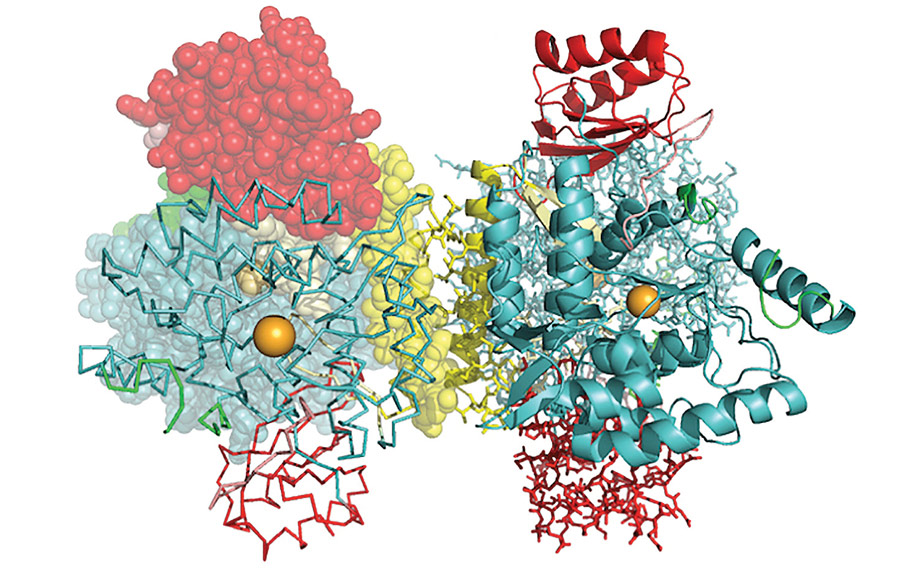
_Emilia Arturo
Arturo is a graduate student in Drexel’s College of Medicine, working in the laboratory of Dr Eileen K Jaffe at the Fox Chase Cancer Center.
For the one in 20,000 people born in the United States each year with the rare metabolic disease phenylketonuria, every meal is an exercise in abnegation.
In phenylketonuria, or PKU, the enzyme that breaks down the amino acid phenylalanine is either missing or defective. Those afflicted must adhere to a protein-restricted diet throughout their lives to prevent mental and behavioral abnormalities.

CRYTAL_CONUNDRUM
The PAH enzyme eluded crystal-structure determination for years, until researchers discovered that the enzyme is represented by two distinct structures rather than one. Once they could separate the two, they were able to grow crystals from which they could determine one of the two structures.
That means eating only carefully measured amounts of fruits, vegetables and low-protein breads and pastas, supplemented with a special phenylalanine-free medical formula. Dairy products, meat, fish, chicken, eggs, beans and nuts are off limits.
Because maintaining this strict diet can be a challenge, researchers are always looking for new, non-dietary treatments to combat PKU symptoms.
Recently, Drexel researchers and an international group of scientists made a critical step toward understanding the disorder by successfully solving the first X-ray crystal structure of phenylalanine hydroxylase (PAH), the enzyme that is defective in patients with the disorder.
For decades, researchers have tried to determine the structure of the PAH enzyme without success. The team’s breakthrough came from discovering that the enzyme is represented by two distinct structures rather than one.
“Knowing the structure at this high resolution is expected to speed up any current drug discovery pursuits,” says Emilia Arturo, a Drexel graduate student in the College of Medicine and study co-author.
Results were published in the Proceedings of the National Academy of Sciences.
Using what they have learned from this study, the team is now working on solving the structure of activated PAH, which functions to prevent blood phenylalanine from rising to neurotoxic levels.
